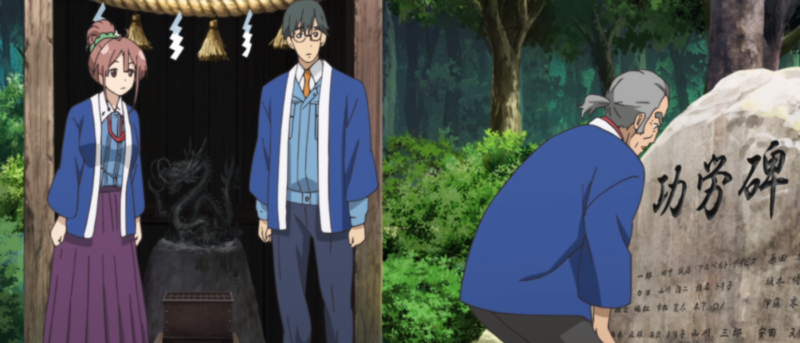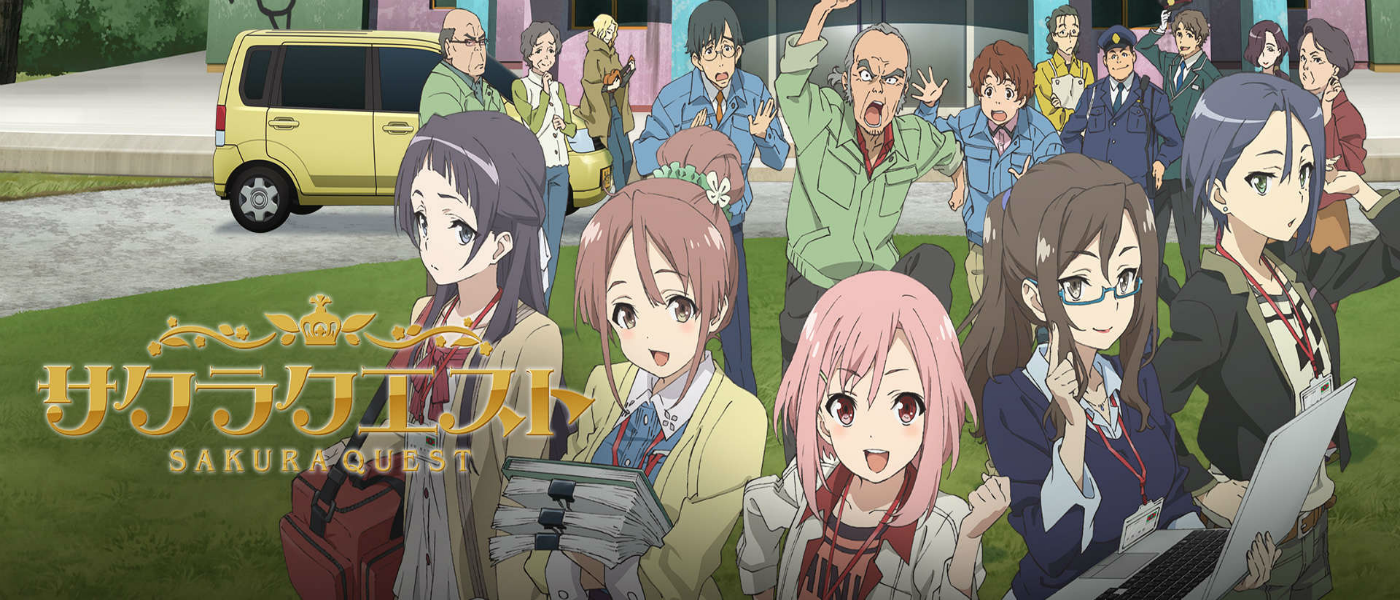English Dub Review: Sakura Quest “The Eternal Obelisk”
The town of Manoyama is on the brink of extinction, though its people live on.
Overview (Spoilers Below)
The worst news has come. Manoyama is to be absorbed into Tomikura. While this means that they could get additional funding for needed improvements, the tiny town will have virtually no say in local government and its traditions will be discarded. This has put Kadota in a foul mood, to say the least. Adding salt to the wound, Northern Living Television jumps in on the Mizuchi festival. They’re offering to put it on national television, but only if they can replace actors in the play with pop idols. Fortunately, Amamiya comes to give them a warning about it coming, so they can come up with counter-proposals. He admits his regret for how “Moving Mountains” turned out, stating that his boss made changes to the editing for his own ratings. He doesn’t want this to turn out the same way. When Kume arrives to pressure them into it, Kadota tells him off. This is a festival for Manoyamans, and they don’t want anyone else messing it. Besides, they have their own website, and everyone in the town is uploading exciting content for the world to see. It even inspires the town to come together, and the shopping district is finally coming to life. The festival goes off without a hitch and is filled with the hometown tradition that makes Manoyama home. Meanwhile, Kadota notices the memorial stone for Sakura Pond. It provides a hard link between Manoyama and Sandal’s hometown. If he can convince the mayor of that town to make Manoyama their sister city, they might just have leverage in the absorption. He darts off to catch Mayor Naumann as he travels to see the sakura blossoms of Japan, but will he be back in time for the Dragon Play?

Our Take
This episode felt like a lot happened, even though it wasn’t any longer than usual. So many events take place, even more than what is in the summary, but they happen so quickly that it feels like you’re joining Kadota on his fateful trip. Partly, this is because the closing credits play over the opening of the Mizuchi Festival, but also, it’s because of how these events are arranged. Each scene begins by talking about the contents of the previous scene, but in a new locale and with different characters, which leads into new events. This way, each event feels like two, greatly expanding the perception of content.
There is a theme here of tying the loose threads of the series together. We get to see characters that have been absent, and we get to see how they are contributing. Shop owners expanding into the shopping districts, Warabiyans engaging through the website and carrying the float with the help of Doku’s exoskeletons, and even that crazy arcade game that feeds you somen. I like it when shows do this. It feels like a reward for getting through the series. What is nice is that the show takes another minute for Yoshino and her decision. This is great character development, as it shows her growth throughout the series. Going from a girl who feels that she’s special and needs to run from a small town to finding inspiration in her current job by throwing herself into it. She doesn’t need a job in the big city, but she isn’t sure what she wants to do. She’s really changed since episode one, even though it’s been tiny changes over a long period of time. The episode also shows her growth in other ways: thinking things through rather than making rash moves that don’t have any real effect. She’s become stable and has authority.
The vast majority of this episode keeps up with the animation standards that P.A. Works set down for it. Smooth, solid, with beautiful scenery. However, when we reach the footage of the festival, there’s a bit more going on there. The dance performed by the float bearers is animated with detail and character, and all of the characters seem to radiate a hometown joy that I can’t quite put a finger on. The animators did a great job infusing this episode with spirit. Just as the Mizuchi festival arrives and must end, the artists see the end of this show on the horizon and are giving it all the love they have.
Mark Stoddard is not a man I talk about much in my reviews. I tend not to pay attention to Kadota, but today he had some depth and range to him. Stoddard brought out the many auditory faces of the old man in this episode. Depression, anger, doubt, and determination, all with a grumpy reality that makes him relatable as a character. It finally has shown up, because he’s grown so much after being around Yoshino so long.
Just as the series is coming to a close, all of the staff are still giving us their all, and are pouring even more into the finale. The writing is great, and the animation and voice acting shows real character. It looks as if this series is going to wrap up on a solemn, if gratifying, note. I look forward to seeing how it all resolves.

























I'm hired!